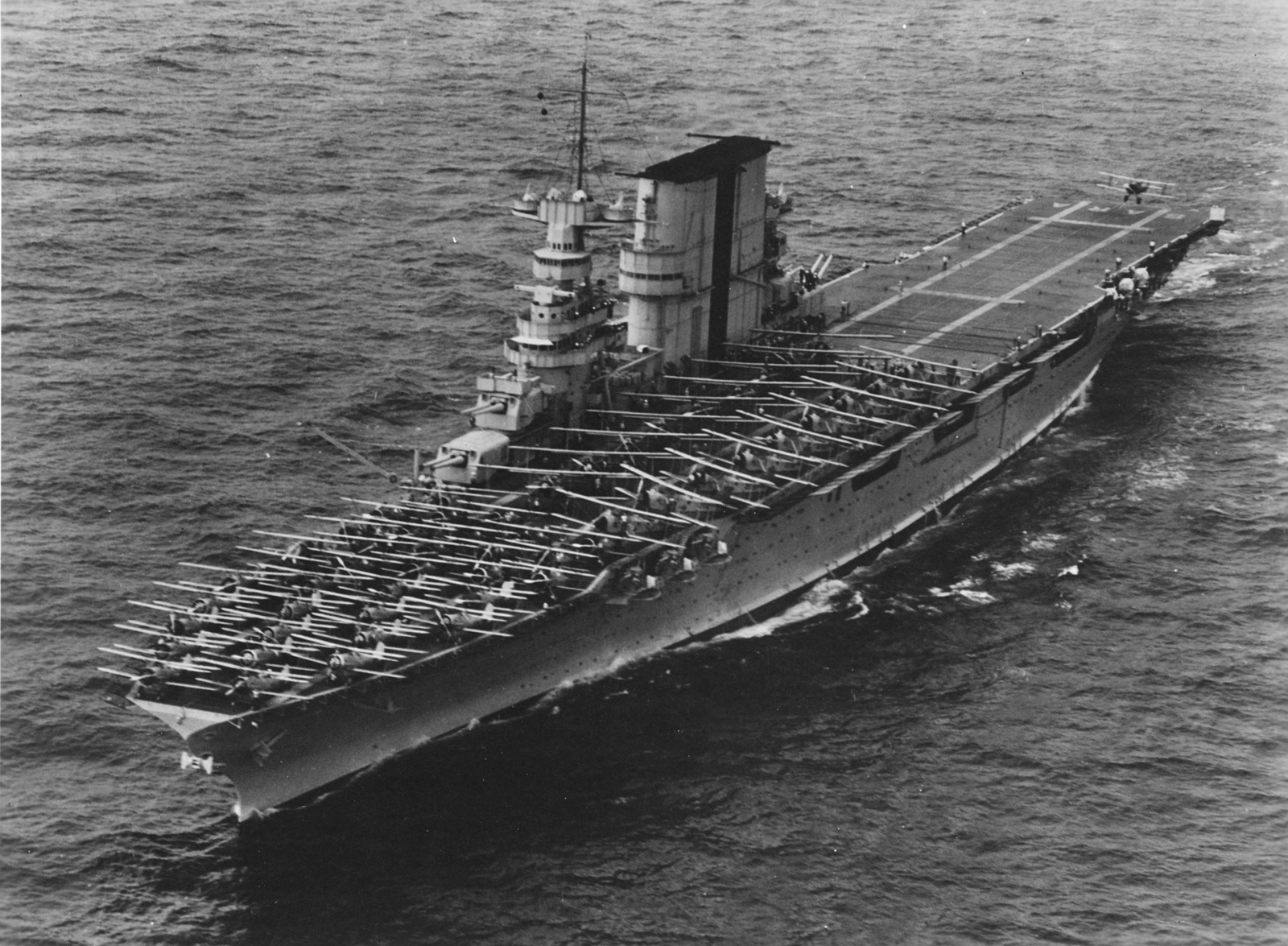
The opening of the twentieth century saw naval warfare dominated by the battleship. These enormous guns-on-steel behemoths were emblems of national prestige and strength. But even as they held court, there was a new challenger biding its time. The rise of aviation gave birth to the aircraft carrier—a ship that carried not cannons as its main weapons, but squadrons of planes. World War II’s Pacific battles would prove just how revolutionary this shift was, with the USS Saratoga, USS Lexington, and USS Enterprise leading the way.

Before the war broke out, the U.S. Navy Carrier Division 1—commanded by Rear Admiral Aubrey W. Fitch—was already trying out what carriers were capable of. Saratoga and Lexington had both begun as drawing board battlecruisers before being refitted as carriers, and they were floating test ranges for what naval aviation in combat might entail. Lexington, with its then-cutting-edge flight deck design, starred at the Battle of the Coral Sea. Even though she was overrun in the battle, her loss slowed Japan’s advance and was a demonstration that carriers, rather than battleships, were the true centerpiece of naval power.

Commissioned in 1927, the Saratoga was a survivor in every respect. Slightly larger than many of her peers, she was able to launch and recover aircraft more quickly and efficiently, and she was an adaptable strike platform throughout the Pacific. Repeatedly, she took torpedo and kamikaze attacks but came back into service, carrying out campaigns such as Guadalcanal, where her air groups were crucial. Her toughness and resilience earned her a place among the Navy’s most consistent carriers, and her experiences operating her influenced tactics for many years to come.

But it was Carrier Division 2, under the passionate Vice Admiral William F. Halsey Jr., and his vessel, the USS Enterprise, that went down in history. Commissioned in 1938, the Enterprise, which her sailors knew affectionately as “The Big E,” soon had a reputation for arriving at the right location at the right moment. From reconnaissance to escorting crucial operations, the Enterprise and her pilots demonstrated their value time and again.

Fortune favored them, too. On Dec. 7, 1941, when Japanese aircraft swooped down on Pearl Harbor, America’s carriers were not in harbor. The Saratoga was in dry dock on the West Coast, the Lexington was transporting planes to Midway, and the Enterprise was sending aircraft to Wake Island. Being absent meant they escaped, and in the ensuing crucial months, they formed the cornerstone of the U.S. Pacific Fleet’s reaction.

The turning point arrived only six months afterward at the Battle of Midway. Japanese commanders wanted to entrap the U.S., capture Midway Atoll, and induce a negotiated peace. They were unaware that American cryptanalysts had already discovered their intention. By intercepting messages and broadcasting a clever false message regarding Midway’s water supply, U.S. intelligence had confirmed the destination and laid the trap.

As the battle raged from June 3–7, 1942, it became a testing ground for carrier warfare. American torpedo bombers launched waves of attacks at first, taking huge losses but siphoning off Japanese fighters. The way was thus cleared for the SBD Dauntless dive bombers of Enterprise and Yorktown, who struck with deadly precision. Within minutes, three Japanese carriers—Akagi, Kaga, and Soryu—were fatally damaged. The fourth, Hiryu, retaliated and disabled Yorktown but was subsequently destroyed by Enterprise planes. Japan’s naval supremacy was broken in a single day, and for the first time in the war, they were put on the defensive.

As Admiral Lisa M. Franchetti later said, “Skill, faith, and valor, the courage and ingenuity of those gallant Sailors in the central Pacific on a warm morning in June 1942, altered the course of the war.” Midway was not another win—it was the turning point when momentum shifted and the United States took the initiative.

The Enterprise came out of the fight with a legendary status. Its planes had sunk three carriers and a cruiser, and “The Big E” would continue to battle in almost every major Pacific operation thereafter. At the end of the war, she had accumulated 20 Battle Stars, the Presidential Unit Citation, and the Navy Unit Commendation, and was the most decorated ship of the conflict.

Behind those large battles were the individual tales that encapsulate the essence of the era. Chief Petty Officer Bill Norberg, the captain’s phone talker on the Enterprise at Midway, was later to remember the pride he felt: “I am proud to be a member of that ship and crew, which did so much to bring an end to the Pacific War.” Such testimony reminds us that history is not a collection of ships and strategies, but of the men who lived and fought aboard them.

Now, the legacy of those first carriers endures in today’s enormous carrier strike groups that cruise the seas. The Saratoga, Lexington, and Enterprise were something more than warships; they were the tools of a new form of warfare, founded on flexibility, reach, and the might of air supremacy. The Pacific War showed that the aircraft carrier had once and for all overshadowed the battleship, and that naval warfare’s future belonged to whoever dominated the skies.
